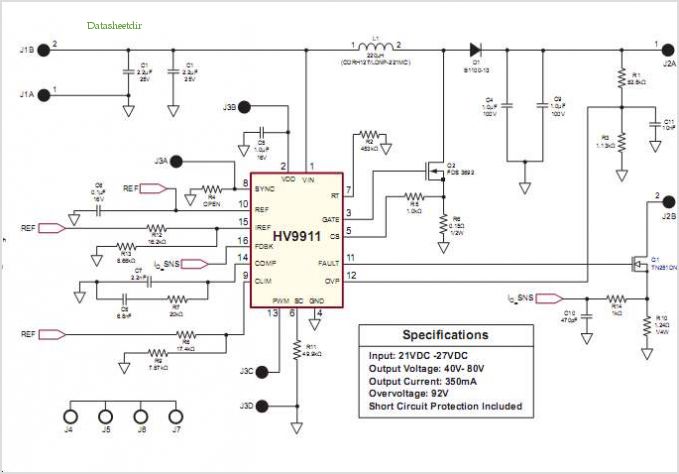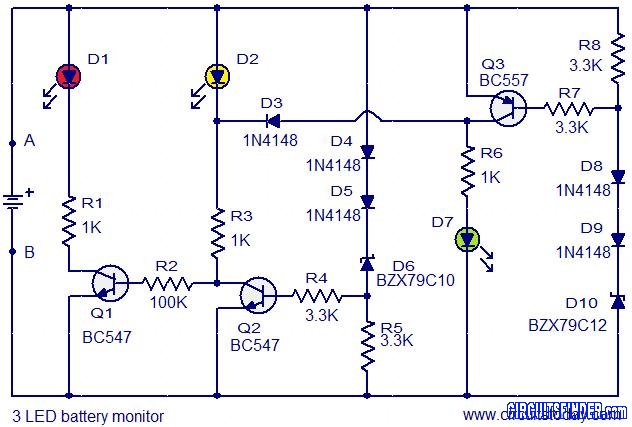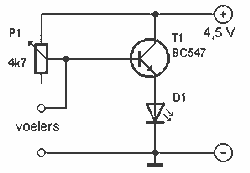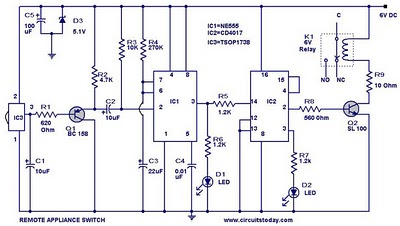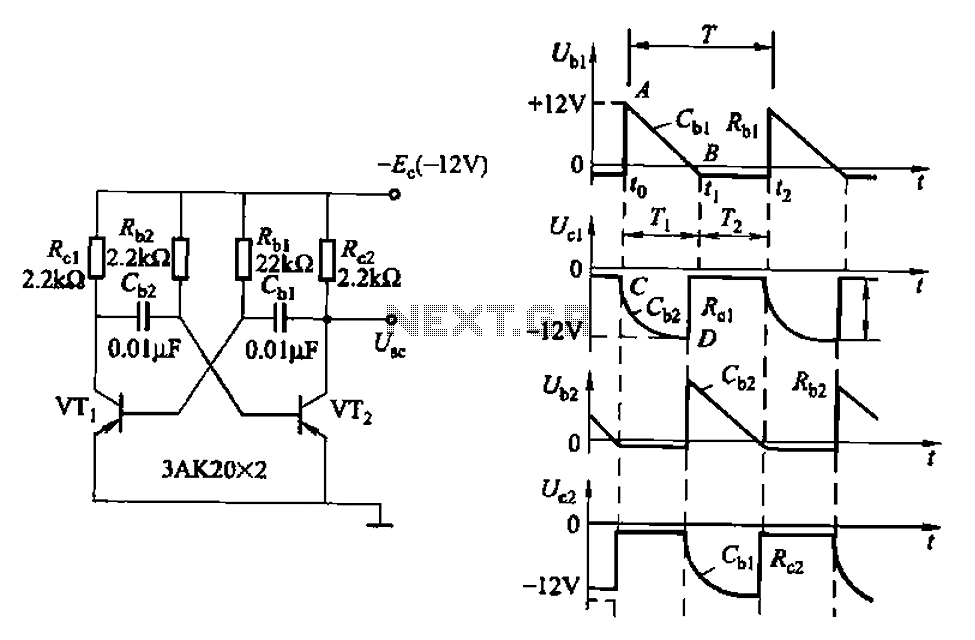
LED STEREO SOUND LEVEL INDICATOR
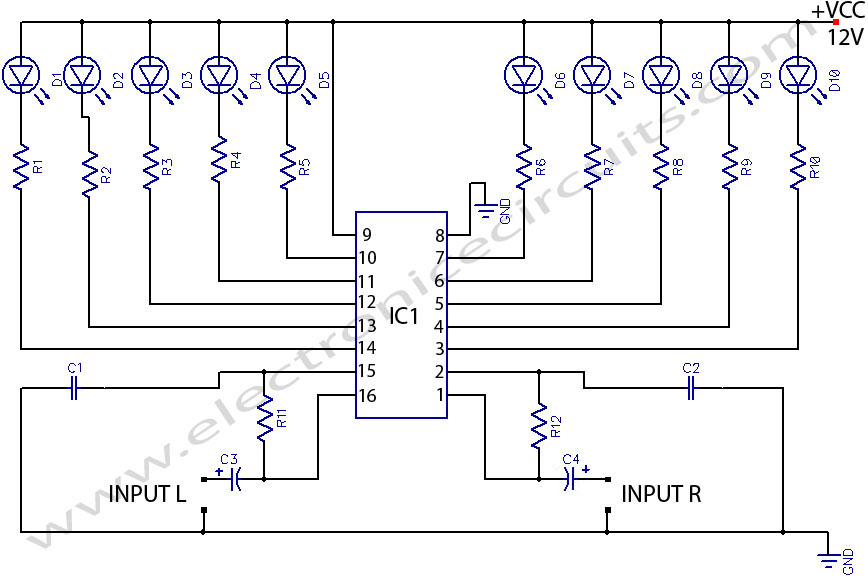
LED stereo sound level indicator for audio amplifier. Many circuits can be designed as level indicators by using a comparator IC or transistors, but...
The LED stereo sound level indicator serves as a visual representation of the audio signal levels in an amplifier circuit. This circuit typically employs a comparator integrated circuit (IC) or discrete transistors to detect and indicate the amplitude of the incoming audio signal.
In a basic configuration, the audio signal is fed into the circuit, where it is compared to a reference voltage. The comparator IC evaluates the input signal levels and drives the LED indicators accordingly. When the audio signal exceeds the predetermined threshold, the comparator outputs a high signal, illuminating the corresponding LEDs. This allows users to visually monitor the audio levels, ensuring that they do not exceed optimal limits, which could lead to distortion or damage to the audio equipment.
The design can include multiple LEDs arranged in a bar graph format, providing a more detailed indication of the sound level. Each LED corresponds to a specific range of audio levels, enabling users to gauge the overall sound dynamics effectively. Additionally, the circuit can be enhanced with features such as adjustable sensitivity and hysteresis to prevent flickering of the LEDs during rapid changes in audio levels.
Power supply considerations are also essential in the design of the LED sound level indicator. The circuit typically operates on a low-voltage supply, commonly between 5V to 12V, ensuring compatibility with standard audio equipment. Proper biasing of the comparator and current-limiting resistors for the LEDs must be calculated to ensure reliable operation and longevity of the components.
Overall, the LED stereo sound level indicator is a valuable tool in audio applications, providing an intuitive and immediate visual representation of sound levels, which is crucial for both performance and equipment protection.LED STEREO SOUND LEVEL INDICATOR FOR AUDIO AMPLIFIER // Many circuits can be designed as level indicators by using a comparator IC or transistors but.. 🔗 External reference
The LED stereo sound level indicator serves as a visual representation of the audio signal levels in an amplifier circuit. This circuit typically employs a comparator integrated circuit (IC) or discrete transistors to detect and indicate the amplitude of the incoming audio signal.
In a basic configuration, the audio signal is fed into the circuit, where it is compared to a reference voltage. The comparator IC evaluates the input signal levels and drives the LED indicators accordingly. When the audio signal exceeds the predetermined threshold, the comparator outputs a high signal, illuminating the corresponding LEDs. This allows users to visually monitor the audio levels, ensuring that they do not exceed optimal limits, which could lead to distortion or damage to the audio equipment.
The design can include multiple LEDs arranged in a bar graph format, providing a more detailed indication of the sound level. Each LED corresponds to a specific range of audio levels, enabling users to gauge the overall sound dynamics effectively. Additionally, the circuit can be enhanced with features such as adjustable sensitivity and hysteresis to prevent flickering of the LEDs during rapid changes in audio levels.
Power supply considerations are also essential in the design of the LED sound level indicator. The circuit typically operates on a low-voltage supply, commonly between 5V to 12V, ensuring compatibility with standard audio equipment. Proper biasing of the comparator and current-limiting resistors for the LEDs must be calculated to ensure reliable operation and longevity of the components.
Overall, the LED stereo sound level indicator is a valuable tool in audio applications, providing an intuitive and immediate visual representation of sound levels, which is crucial for both performance and equipment protection.LED STEREO SOUND LEVEL INDICATOR FOR AUDIO AMPLIFIER // Many circuits can be designed as level indicators by using a comparator IC or transistors but.. 🔗 External reference
